Acrylic painting is a versatile and dynamic medium that allows artists to express their creativity in various ways. One intriguing question that often arises is, “Can we mix water in acrylic paint?”
In this exploration, we delve into the fascinating realm of acrylic painting techniques, investigating the impact of water on the consistency, texture, and vibrancy of acrylic pigments.
As artists seek to push the boundaries of their craft, understanding the potential effects of water on acrylic paint opens new avenues for experimentation.
Join us on this artistic journey as we unravel the secrets behind mixing water with acrylics, discovering how this unconventional approach can yield unique results and redefine the boundaries of traditional painting methods.
Let’s embark on a creative exploration that challenges preconceptions and sparks innovation in the world of acrylic artistry, pushing the boundaries of creativity and adding a splash of innovation to your artistic endeavors.
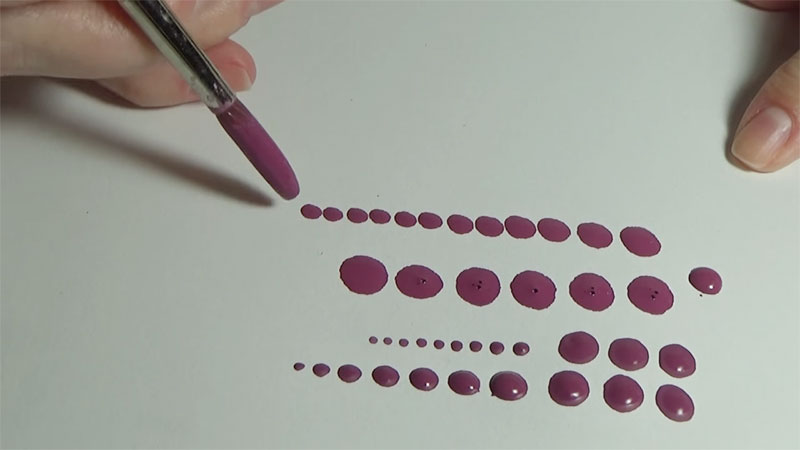
Can We Mix Water In Acrylic Paint?
Mixing water with acrylic paint is a common practice that opens a realm of creative possibilities for artists. Let’s explore the answer to ‘Do you mix acrylic paint with water‘, examining the impact on texture, transparency, and overall painting dynamics.
Understanding Acrylic Paint Composition
Before delving into the world of water and acrylics, let’s briefly understand the composition of acrylic paint. Acrylics consist of pigments suspended in a water-based emulsion.
When applied to a surface, the water in the emulsion evaporates, leaving behind a layer of pigment. This quick drying time is a characteristic feature of acrylics, allowing artists to build layers and work efficiently.
The Basics of Adding Water
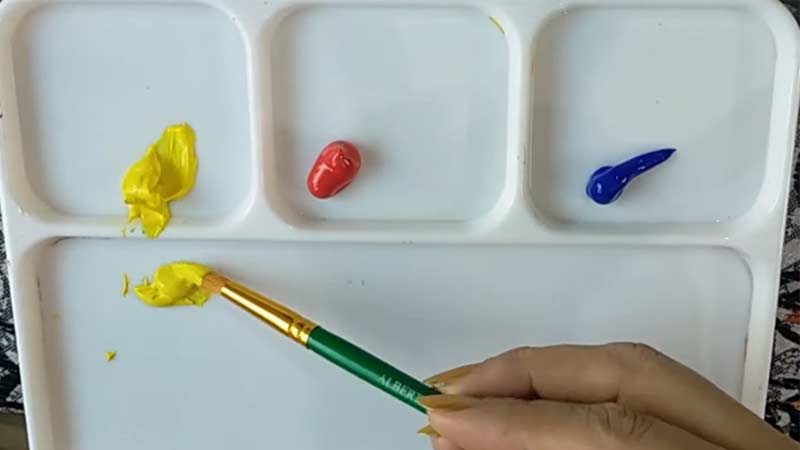
Adding water to acrylic paint alters its consistency. The more water added, the thinner the paint becomes.
This can be advantageous for certain techniques, such as glazing or creating translucent washes. However, excessive water may dilute the pigment, affecting color intensity.
Impact on Transparency
One of the fascinating aspects of mixing acrylic paint with water is its influence on transparency. Water-thinned acrylics can create ethereal and translucent layers, adding depth to paintings. This is particularly useful for artists aiming to achieve a watercolor-like effect with the vibrancy of acrylics.
Achieving Texture with Water
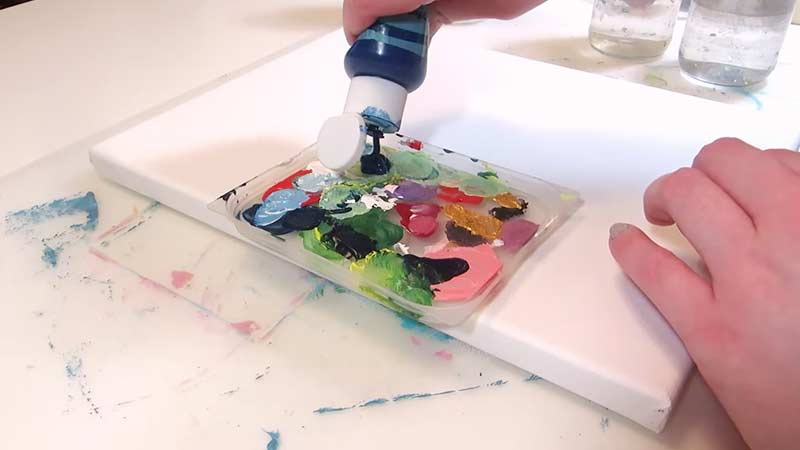
Texture is another dimension that water introduces to acrylic paintings. When water is added to acrylic paint, it can enhance the flow and create interesting textures, especially when applied with different tools or techniques.
Experimentation with brushstrokes, palette knives, or even pouring methods can yield captivating results.
Controlling the Flow
Controlling the flow of acrylic paint becomes crucial when acrylic paint is mixed with water. Artists can use this to their advantage by manipulating the viscosity to create smooth gradients or expressive drips. It’s essential to strike a balance, as too much water may lead to unpredictable outcomes.
What Are the Benefits of Mixing Water with Acrylics?
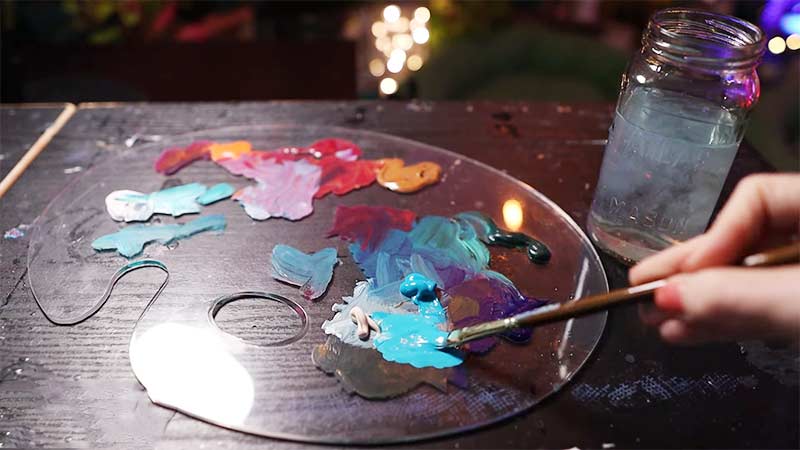
Mixing water with acrylic paint is a technique that offers a myriad of benefits, expanding the possibilities for artists seeking versatility and innovation in their work.
While acrylics are known for their quick drying time and vibrant colors, the addition of water introduces new dimensions to the painting process.
Extended Drying Time
One significant benefit of mixing water with acrylics is the extension of drying time. Acrylics, by nature, dry quickly, which can be advantageous for layering and building up textures.
However, this fast drying time can be a challenge for artists who prefer a more deliberate approach. Adding water slows down the drying process, providing artists with a more forgiving timeframe to blend colors seamlessly and work on intricate details.
Enhanced Flow and Brushwork
Water thins the consistency of acrylic paint, resulting in a smoother and more fluid application. This alteration in viscosity allows for improved brushwork, enabling artists to create long, flowing strokes with ease.
Whether you’re aiming for expressive brushwork or a more controlled application, the enhanced flow achieved through water-mixing facilitates a broader range of artistic expression.
Cost-Effective Medium
While there are specialized acrylic mediums designed for thinning and extending paint, water serves as a cost-effective alternative. For artists on a budget, using water to modify acrylics provides an accessible way to experiment with different techniques without the need for additional mediums.
This affordability encourages creativity without compromising on the quality of the final artwork.
Versatility in Techniques
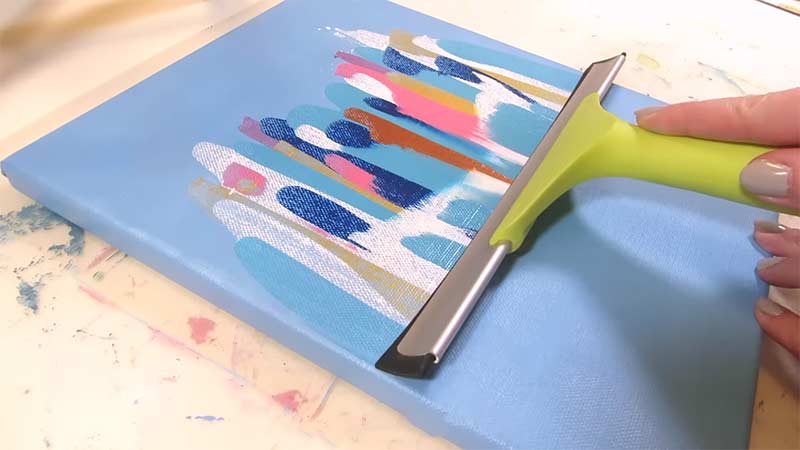
The introduction of water to acrylic paint opens the door to a multitude of artistic techniques. Artists can explore controlled washes, delicate glazes, or spontaneous pours.
The versatility offered by water-thinned acrylics allows for a broad spectrum of artistic expressions, making it an ideal choice for those who enjoy experimenting with different styles and approaches within a single painting.
Texture and Layering Opportunities
Water not only alters the flow of acrylic paint but also influences its texture. When mixed with water, acrylics can be manipulated to create interesting textures, ranging from smooth gradients to expressive impasto effects.
This textural diversity enhances an artist’s ability to convey depth and dimension within their work. Layering becomes a more dynamic and nuanced process, as artists can build up translucent layers with water-thinned acrylics.
Increased Transparency
Transparency is a sought-after quality in certain artistic styles, and water is a key tool in achieving this effect with acrylics. By diluting the paint, artists can create transparent and semi-transparent layers, allowing underlying colors to shine through.
This property is particularly valuable for artists who wish to achieve a watercolor-like translucency while still benefiting from the vibrancy and permanence of acrylic pigments.
Ease of Blending and Gradation
Mixing water with acrylics enhances the ease of blending colors on the canvas. Artists can achieve seamless gradations and transitions between hues, whether through wet-on-wet techniques or gradual layering.
This blending capability is especially beneficial for creating realistic representations, atmospheric effects, or expressive color gradients in abstract compositions.
Dynamic Pouring and Dripping
Diluted acrylics are well-suited for pouring and dripping techniques, adding a dynamic and spontaneous element to artworks. The fluidity achieved through water mixing allows artists to experiment with gravity, creating unique patterns and textures.
This approach is particularly popular in contemporary acrylic pouring art, where the unpredictability of water-thinned paints adds an element of excitement to the creative process.
How to Mix Acrylic Paint with Water?
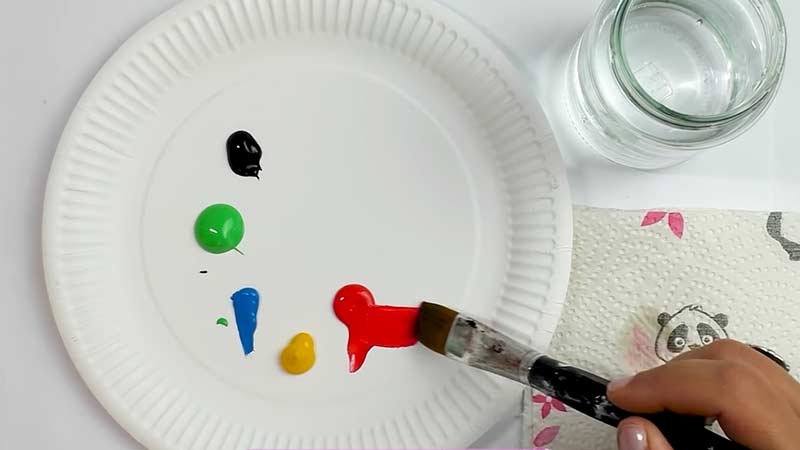
Mixing acrylic paint with water is a simple yet versatile technique that can be employed to achieve various effects in your artwork. Here’s a step-by-step guide on how to mix acrylic paint with water:
Select Your Acrylic Paint
Start by choosing the acrylic paint colors you want to work with. Ensure the paint is of good quality to maintain color vibrancy, especially when diluting with water. Squeeze a small amount of each chosen color onto your palette.
Prepare Your Palette
Leave enough space between colors for mixing and adjusting consistency.
Using a clean brush or a dropper, add a small amount of water to one of the paint puddles on your palette. Start with a conservative amount; you can always add more if needed.
Mix Thoroughly
Use a palette knife or a brush to mix the water and acrylic paint thoroughly. Continue until you achieve a smooth and consistent mixture. Ensure that there are no lumps or undissolved paint particles.
Pay attention to the consistency of the paint. The more water you add, the thinner the paint becomes. Adjust the water content based on your desired consistency for the specific technique you plan to use.
Test on Scrap Paper or Canvas
Before applying the water-mixed paint to your actual artwork, conduct a test on scrap paper or canvas. This allows you to observe how the diluted paint behaves and make adjustments if necessary.
Explore various techniques based on your artistic goals. Whether you’re aiming for a watercolor-like wash, controlled glazes, or pouring, or dripping effects, the level of water added will impact the final result.
Layering and Building Texture
If you plan to layer your water-thinned acrylics or build texture, allow each layer to dry before adding the next. This helps prevent muddiness and ensures the adhesion of subsequent layers.
Since you’re using water, make sure to clean your brushes promptly to prevent paint residue from drying on the bristles.
Considerations
Be mindful of the color shift that can occur when acrylic paint is wet. Colors may appear lighter when diluted with water but will often regain intensity as they dry. Experiment with different amounts of water to understand how it affects transparency, flow, and texture.
FAQs
Can I mix water with any type of acrylic paint?
Yes, you can mix water with most acrylic paints. However, it’s recommended to use high-quality acrylics for better color vibrancy. Student-grade paints may not provide the same intensity when diluted.
How much water should I add to acrylic paint?
Start with a small amount and gradually increase as needed. A common ratio is around 1:1 (equal parts water and paint) for light washes. Adjust based on your desired consistency and the technique you’re using.
Does adding water affect the permanence of acrylic paint?
In general, properly mixed water with acrylics shouldn’t compromise permanence. However, excessive water can impact adhesion, so ensure surfaces are properly primed, and don’t dilute the paint excessively.
Can I mix water with acrylics for impasto techniques?
Water-thinning is more suitable for techniques like glazing or washes. For impasto (thick textured applications), it’s advisable to use a medium or gel designed for thickening rather than water, as water can compromise the texture.
Does water affect the drying time of acrylic paint?
Yes, adding water can extend the drying time of acrylics. This is beneficial for artists who prefer a more relaxed pace for blending and layering. Experiment with water amounts to find the drying time that suits your artistic process.
Conclusion
The fusion of water with acrylic paint emerges as a captivating avenue for artistic expression. Through our exploration, we’ve witnessed how this unconventional combination can influence the flow, transparency, and overall visual impact of acrylic artworks.
Artists who dare to experiment with water in their acrylic palette discover a nuanced spectrum of possibilities, allowing for a balance between control and spontaneity in their creations.
As we close this chapter on mixing water with acrylic paint, let it be a reminder that art is a continual journey of discovery.
Embrace the unexpected outcomes, learn from the process, and use newfound knowledge to amplify your artistic repertoire.
Whether you’re a seasoned artist or just beginning to dip your brush into the world of acrylics, the interplay of water and pigment invites you to forge your path.
May your future artworks be infused with the bold spirit of experimentation and the joy of artistic exploration.
Leave a Reply